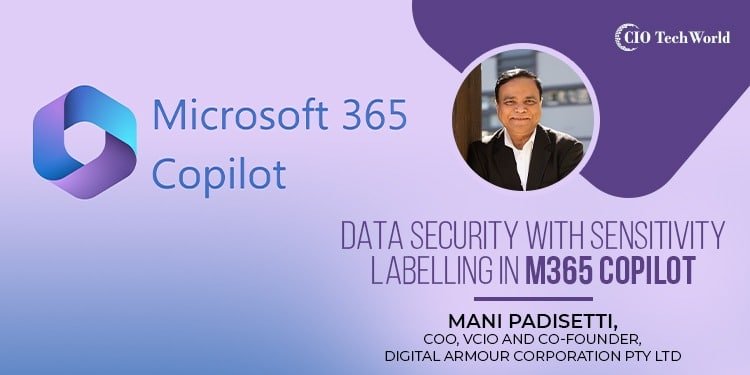As businesses harness AI’s power to enhance productivity and streamline operations, adopting robust security measures to protect sensitive information is crucial.
It would help if you implemented sensitivity labeling in your Microsoft environment before deploying M365 Copilot. However, we often encounter questions about whether existing Access Control Lists (ACLs) are sufficient. Let’s explore why sensitivity labeling is essential and how it goes beyond the capabilities of ACLs.
The Role of Access Control Lists (ACLs)
Access Control Lists (ACLs) are a fundamental component of data security. They specify which users or system processes are granted access to objects and what operations are allowed on given objects. While ACLs play a critical role in managing permissions and protecting data, they have limitations regarding the nuanced and dynamic nature of modern data security needs.
Limitations of Relying Solely on ACLs
- Static Permissions:
- ACLs are often static and do not adapt to the changing sensitivity of data. As data evolves and becomes more or less sensitive, manually updating ACLs can be cumbersome and prone to errors.
- Lack of Contextual Awareness:
- ACLs lack the contextual awareness needed to handle data based on its sensitivity level. They do not account for the varying degrees of sensitivity that different pieces of data may have.
- Inadequate Compliance Requirements:
- Regulatory and compliance requirements often demand more granular control and tracking of sensitive data than ACLs can provide. Sensitivity labeling ensures that compliance standards are met more effectively.
The Importance of Sensitivity Labeling
Sensitivity labeling is a sophisticated method that enhances data security by dynamically categorizing data based on sensitivity. Here’s why sensitivity labeling is a critical step before using M365 Copilot:
- Dynamic Data Classification:
- Sensitivity labels allow for the dynamic classification of data, adapting to the changing nature of information. This ensures that data is always appropriately protected according to its current sensitivity level.
- Enhanced Security Policies:
- With sensitivity labeling, you can enforce more granular security policies. For example, highly sensitive data can be restricted from being shared externally, while less sensitive data can have more relaxed restrictions.
- Automated Compliance:
- Sensitivity labels automate the application of compliance policies. This reduces the risk of human error and ensures that sensitive data is handled in accordance with regulatory requirements.
- Seamless Integration with M365 Copilot:
- M365 Copilot leverages sensitivity labels to ensure that AI-driven insights and recommendations respect the data’s sensitivity. This integration enhances overall data security and user trust.
Implementing Sensitivity Labeling
To implement sensitivity labeling in your Microsoft environment, follow these steps:
- Identify Sensitive Data:
- Conduct a thorough assessment to identify sensitive data within your organization. This includes understanding the types of data you handle and their respective sensitivity levels.
- Define Sensitivity Labels:
- Create sensitivity labels corresponding to different data sensitivity levels (e.g., Confidential, Internal, Public). Define the policies and restrictions associated with each label.
- Apply Sensitivity Labels:
- Use automated tools and user-driven processes to apply sensitivity labels to your data. Ensure that labels are consistently applied across all data assets.
- Monitor and Adjust:
- Continuously monitor the effectiveness of your sensitivity labeling strategy. Adjust labels and policies as needed to respond to changing data security requirements.
While Access Control Lists (ACLs) are a valuable component of data security, they are not sufficient on their own to address the dynamic and complex nature of modern data protection needs. Sensitivity labeling provides an additional layer of security, ensuring that data is always protected according to its sensitivity. By implementing sensitivity labeling before deploying M365 Copilot, you can enhance data security, meet compliance requirements, and fully leverage the capabilities of AI while maintaining trust and integrity.
Read More Insightful Articles by Mani Padisetty:
Choosing Your Microsoft Copilot: M365 or Azure AI?
Mani Padisetti: Enhancing Your Cybersecurity with AI

My journey as the COO, vCIO, and Co-Founder of Digital Armor Corporation and Co-Founder and CEO of Emerging Tech Armory reflects my extensive experience and unwavering dedication to helping medium-sized businesses leverage technology for growth and success. With over two decades of founding and running my own company, I have established myself as a trusted expert in empowering SMBs to enhance productivity, scale effectively, and gain a competitive advantage in their respective industries.
I often refer to myself as the “Growth Catalyst for Mid-Sized Businesses” because I understand the unique challenges these enterprises face, such as limited budgets. I deliver tailored solutions that address their specific goals and constraints.
My secret ingredient to effective leadership is finding joy in being a catalyst for others’ success. I firmly believe in acting in the best interest of my clients, genuinely caring for their businesses as if they were my own. This client-centric approach forms the foundation of my leadership philosophy, driving me to go above and beyond to ensure my clients’ satisfaction and prosperity.









